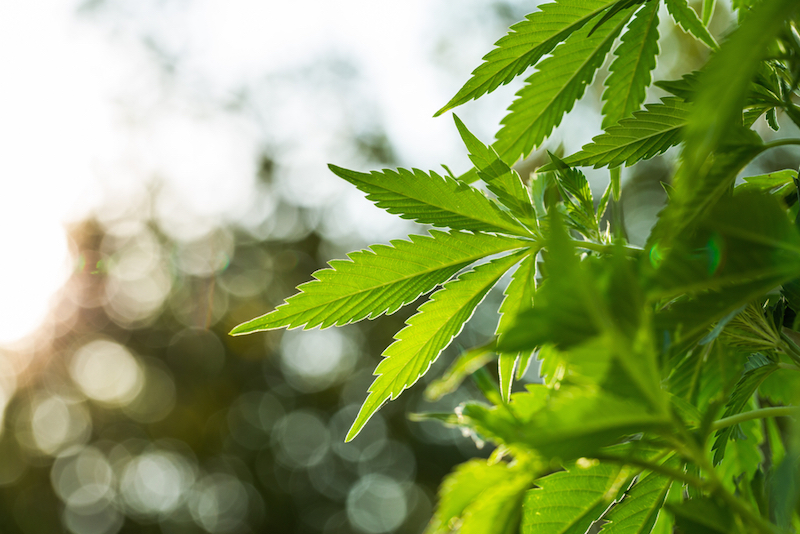Weed: Good for the Bones?

Got pot?
Marijuana might take a cue from the famous advertising slogan for milk. A new study suggests that weed might be good for the bones.
The compound cannabinoid cannabidiol (CBD), which is a nonhallucinogenic chemical in marijuana plants, helps heal bone fractures, the research finds. The study was done in rats, but rodents have proven to be useful models for human bone treatments in the past, said Yankel Gabet, a bone researcher at Tel Aviv University's Sackler Faculty of Medicine.
"All the current clinical treatments for osteoporosis [have] been successfully tested in rodents prior to clinical settings," Gabet wrote in an email to Live Science. "While there is no certainty, these findings hold promise for the potential clinical applicability of using CBD for fracture healing in humans."
Marijuana produces its effects by triggering the receptors that respond to compounds called endocannabinoids, cannabislike molecules that the body synthesizes naturally. In the brain, pot acts on these receptors to cause mind-altering effects. But cannabinoid receptors are found all over the body, leading some researchers to think that pot compounds might have medical applications beyond helping cancer patients regain their appetites or get relief from pain.
Gabet said he and his team were particularly interested in looking at the effects of cannabis on bone healing, because pot use and broken bones are both fairly common.
"It is likely that many patients suffering from bone fractures consume cannabis that may have beneficial or adverse effects on the healing process," Gabet said.
Sign up for the Live Science daily newsletter now
Get the world’s most fascinating discoveries delivered straight to your inbox.
The researchers had previously found that cannabinoid receptors can stimulate bone formation. In the new study, the team injected rats that had broken thighbones with either CBD alone, or a combination of CBD and THC (tetrahydrocannabinol, the hallucinogenic ingredient in marijuana).
The researchers found that CBD enhanced bone healing by strengthening the cartilage "bridge" that forms when a bone is on the mend. This bridge is called the fracture callus; it's made of collagen, which then gradually mineralizes and hardens into new bone.
In rats treated with CBD, this collagen tissue was stronger, and the collagen molecules more tightly cross-linked with one another, compared to rats not treated with the marijuana compound. What this means, researchers wrote online May 10 in the Journal of Bone and Mineral Research, is that the healed bone in CBD-treated rats is less likely to break in the future compared to the healed bone in untreated rats. In fact, the treated bone is between 35 percent and 50 percent stronger. [11 Odd Facts About Marijuana]
THC was not necessary to get this bone boost, the researchers also found.
"There is no need to be exposed to the euphoric effects of cannabis/THC to get the beneficial functions of CBD on bone," Gabet said.
The CBD compound has potential for treating osteoporosis, said Dr. Deborah Kado, a bone health specialist at the UC San Diego School of Medicine, who is also on the scientific board of Kalytera Therapeutics, a company investigating the medical use of cannabinoids. Kado was not involved in the current study.
Osteoporosis, a condition of weak or brittle bones, often occurs with age. According to the National Osteoporosis Foundation, 54 million Americans have osteoporosis or low bone density, and the disease causes approximately 2 million bone fractures each year.
"As we currently have no FDA-approved medications on the market to help with fracture healing, this study concept is exciting," Kado told Live Science.
Follow Stephanie Pappas on Twitter and Google+. Follow us @livescience, Facebook & Google+. Original article on Live Science.

Stephanie Pappas is a contributing writer for Live Science, covering topics ranging from geoscience to archaeology to the human brain and behavior. She was previously a senior writer for Live Science but is now a freelancer based in Denver, Colorado, and regularly contributes to Scientific American and The Monitor, the monthly magazine of the American Psychological Association. Stephanie received a bachelor's degree in psychology from the University of South Carolina and a graduate certificate in science communication from the University of California, Santa Cruz.










